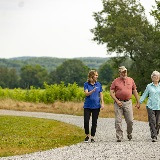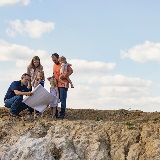This article is part 2 of our “Buying Land” series.
Rural 1st has the lending expertise and rural focus needed to offer land financing packages tailored to your specific needs. That’s why we’ve developed this helpful video series for people wanting to purchase their perfect piece of land.
Let’s talk about what you need to know as you start your land buying journey.
So, you’ve decided you want to purchase some land, maybe build on it in the future, have a budget in mind, and you’re curious about the whole process and what comes next.
Before you apply for a lot or land loan, it’s important to build a team of experts. While our Rural 1st loan officers play a critical role on your team, there is another key player who will help you on your journey—your real estate agent. A real estate agent that specializes in land purchases can be invaluable as you look for a property that meets your needs.
Understanding how you’d like to use the property is the primary consideration when purchasing land. Did you know that some properties have deed restrictions on the types of livestock you can have on the property? What about access rights for building a road? All these restrictions are found in the property’s deed and a well-versed land real estate agent will know to look for these specifics.
In addition to the cost of building the home, it’s important to think about the cost of site improvements, such as constructing a driveway, running utilities, drilling a well or adding a septic system. You will want to make sure you contact your local homeowner’s insurance agent for flood zone maps of the property. It’s also important to find out how high the water rises during spring runoff so you know about areas where flooding could occur.
Maybe you want to hunt and fish or spend weekends with your family at a cabin. If you want the land for hunting, you’ll want to make sure there’s enough acreage and wooded area to attract wildlife. Growing food plots is one of the best ways to attract wildlife to your land. Consult a land management specialist to find out which plants keep deer and other wildlife visiting your land during hunting season.
If you’re interested in harvesting timber, you’ll need to know the types and sizes of trees you’ll need. Consult with a forest professional to visit the property and create a forest management plan to ensure the longevity and health of the land. They can also identify marketable trees that could potentially have value.
Depending on the type of soil on your land, you may be able to grow vegetables, fruits or flowers—which could be a potential source of income. Do some research on which crops grow best in your area. If you’re not interested in farming it yourself, consider partnering with a local farmer who may be interested in renting those acres. Renting acreage can provide you with a revenue source as well as help with maintaining the land.
If you’re interested in buying property that is going to be parceled off from a larger section, don’t forget to consider the survey expense which can vary significantly. You will want a survey to know exactly how much land you’re buying and where the boundaries lie.
Once you’ve met with your real estate agent, it’s time to get pre-qualified. Our Rural 1st loan officers will walk you through the financing required to purchase your land and help you understand what’s needed to close your loan. When purchasing land, it’s important to consider the additional down payment requirements and higher credit standards that may be required. Rates vary, but by obtaining a pre-qualification you’ll have the confidence to make an offer that works for you.
Now that you understand what you need to know as you start your land buying journey, join us in the next video to learn about the application process. Or if you would like to get started, reach out to us today.





